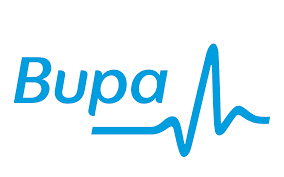The knee joint is a bridge between the foot and the lower back. Made up of three individual joints and a collaboration of ligaments, the knee plays a crucial role in supporting body weight. Within the knee there is cushioning known as cartilage which is subjected to a great deal of force during natural movements such as running and squatting.
What is Runners knee?
Running is a repetitive motion that can eventually cause ‘runner’s knee’, also known as patello-femoral pain syndrome (PFPS). In a nutshell what happens in runner’s knee is the layer of cartilage underneath the knee cap becomes irritated as it rubs against the thigh bone (femur). The constant and sometimes abnormal movement of the knee cap (patella tracking) can create friction between the two bones, this can lead to knee pain.
Preparation is essential to maintaining healthy knees. The following rehabilitation guide can enhance the integrity and durability of your knees and help prevent against future degeneration.
Knee-hab: Rehabilitation for The Knee
Treat your feet
When was the last time you purchased new running trainers? If it wasn’t within the last year then take a moment to inspect the soles of your trainers. The base of the trainer has the same role as the cartilage (meniscus) in your knee which is to absorb shock. Running trainers need to be supportive of the arches and have generously cushioned soles so that the majority of force is absorbed by your footwear and not the knee itself. Trainers shoulder be replaced every 12 – 18 months, especially for regular road runners.
Depressurize the patella
The surface of the knee cap (patella) is covered by a tendinous sheet which comes from the quadriceps muscles at the front of the thigh. The tendon can become taught if there is any excess tension in the quadriceps which can result in the cartilage beneath the patella becoming compressed. The patella may begin to grind away at the soft cartilage so it is important to relieve this pressure to prevent irritation. To do this stretch the quad out by laying on your front and using your hands to bend the knee towards the buttock. To enhance this stretch place a foam roller under the thigh whilst bending the knee, this will put the hip into extension so all of the quads are being targeted.

Stretch the posterior chain
The hamstrings (back of the thigh) and the calf muscles (back of the lower leg) combine to form part of the posterior muscle chain. Tension in these muscles, especially the hamstrings, can restrict full extension at the knee and movement of the fibula. Correct movement of the fibula is essential because it reduces stress through the ankle and tibia (shin bone). To stretch the posterior chain put a foam roller against a wall with your foot on the side so the ankle is at a right-angle and the knee is fully straight. In this position hitch the hips back whilst leaning against the wall for support, hold this position for 2 minutes for each leg.

Swap the road for the treadmill
Miles and miles of pounding away on the road won’t be doing your knees any favours. The road is a compact surface without much give so switching to a grassy surface or a treadmill with good suspension will help to reduce the compressive forces in the knee during a run.
Stabilise the knee
The knee relies heavily on a number of ligaments to keep it stabilised. For the short-term using a knee support can be beneficial but isn’t necessarily practical in the long run. Strengthening the muscles that cross the knee such as the VMO (vastus medialis oblique) and the popliteus can increase its overall integrity. Knee-dips are a good exercise for the VMO, which is the tear-drop shaped muscle of the inner knee. Stand on an elevated surface and put all of your weight through one knee by holding on to a rail or wall for balance. In this position slowly bend (flex) the knee slightly and then fully straighten (extend) it again by pushing up with the leg. Complete 15-20 repetitions for each knee daily.

Roll your foot out
The foot consists of a number of small bones that articulate together to assist the transfer of body weight during running. If they are restricted this can cause problems for the knee. By standing on a hard cricket or lacrosse ball you can carefully transfer your weight around on top of the ball to massage the sole of your foot. Although this is uncomfortable it is an effect way of mobilising the bones of the foot and releasing adhesions in the plantar fascia.
Know when to stop
Unfortunately knee pain isn’t something you can just run off, especially if it’s running that is responsible in the first place. Listen to your body and know when to stop, taking a two week rest to allow for the inflammation to settle down is better than causing permanent damage.
Take a dip
When running is causing more problems than it is solving then it is time to find another means to exercise. You are almost weightless in the water which allows you to exercise without joint compression whilst the cool temperature of the water can help to reduce inflammation within the joint.
Summary
Stretch the quads, calves and hamstrings.
Strengthen the vastus medialis and popliteus muscles.
Mobilize the small bones of the foot and plantar fascia.
Avoid running on hard surfaces and unsupported trainers.
If you are experiencing knee pain you can book your free consultation online today to talk to one of our experienced practitioners one to one about how we can help you to restore full function to your knee. Alternatively call Freedom Clinics Leeds on 0113 345 5060 for further advice from one of our specialists.
By Daniel Stott (Registered Osteopath at Freedom Clinics Leeds)





